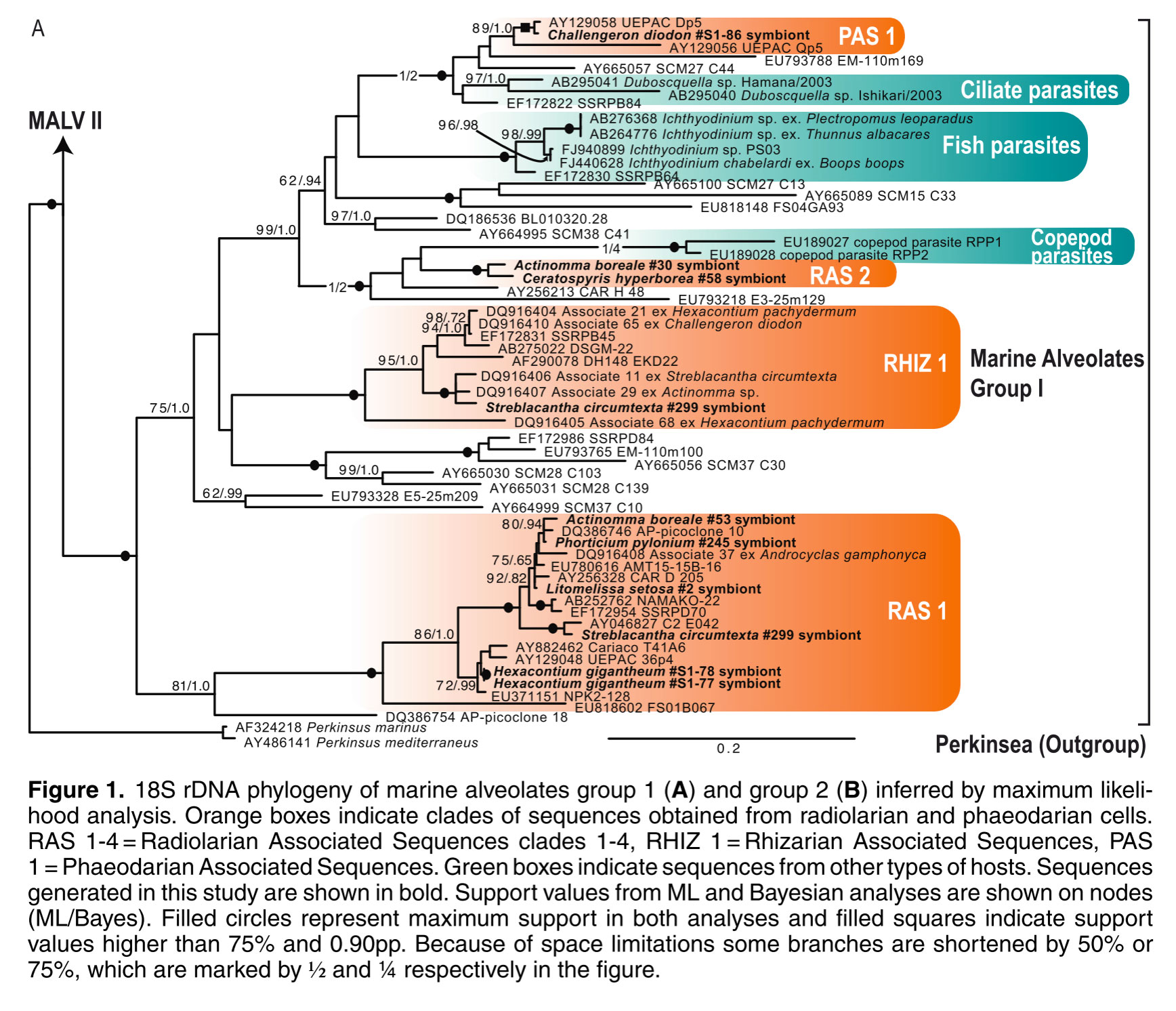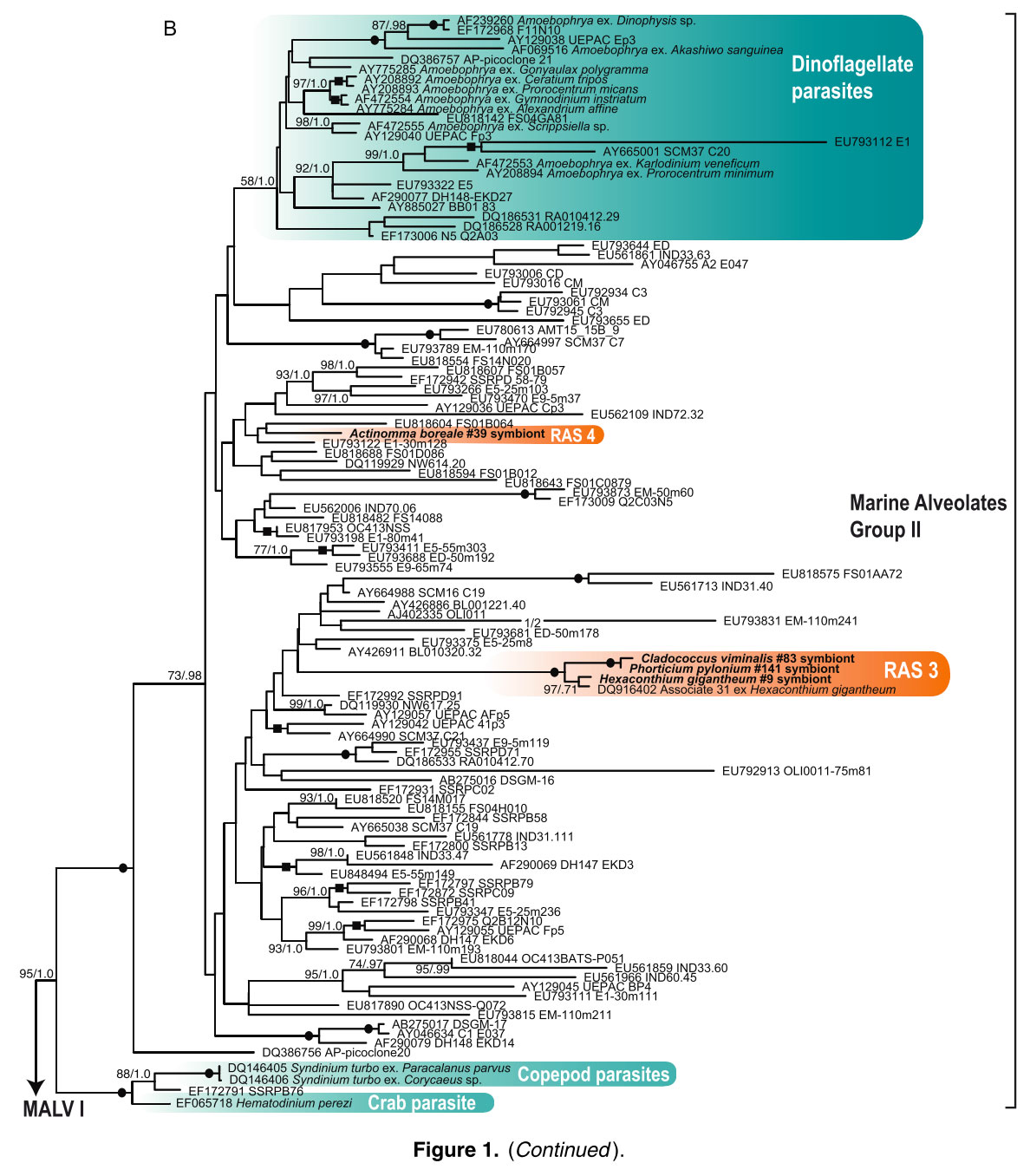Radiolaria Associated with Large Diversity of Marine Alveolates
Bråte, J., Krabberød, A. K., Dolven, J. K., Ose, R. F., Kristensen, T., Bjørklund, K. R. and Shalchian-Tabrizi, K. 2012. Protist. 163(5):767-77. doi:10.1016/j.protis.2012.04.004


Abstract
We have isolated cells of unculturable radiolarians from marine coastal waters. Individual cells were subjected to single cell whole genome amplification (SCWGA) and gene-targeted PCR. Using this approach we recover a surprisingly large diversity of sequences related to the enigmatic marine alveolate groups 1 and 2 (MALV I and MALV II) that most likely represent intracellular symbionts or parasites of the radiolarian cells. 18S rDNA phylogeny of the MALV sequences reveals 4 distinct clades of radiolarian associates here named Radiolarian Associated Sequences (RAS) 1-4. One clade of both phaeodarian and radiolarian associates and one clade of only phaeodarian associates are also identified. The MALV sequences cluster according to host type, i.e. sequences from associates identified in radiolarians, fish, copepods, ciliates or dinoflagellates are not intermixed but separated into distinct clades. This implies several independent colonizations of host lineages and links a large diversity of MALV to radiolarian-associated species. This demonstrates that radiolarians may be an important reservoir for MALV, making them a key group for understanding the impact of intracellular symbionts on the marine ecosystem. This study shows that applying SCWGA on unculturable cells is a promising approach to study the vast diversity and interactions of intracellular eukaryote organisms.